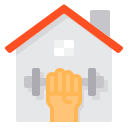Design the Week: Structure That Sticks
Follow a simple split: two strength days, two cardio days, two mobility or skills days, one true rest day. This aligns with guidelines of 150 minutes of moderate activity plus muscle‑strengthening twice weekly. Comment which two days you’ll claim for strength.
Design the Week: Structure That Sticks
Attach workouts to existing habits: after morning coffee, before lunch, or right after work. Lay out a mat, fill a water bottle, and queue your playlist beforehand. Reducing decisions shrinks excuses and makes your weekly plan feel automatic.




